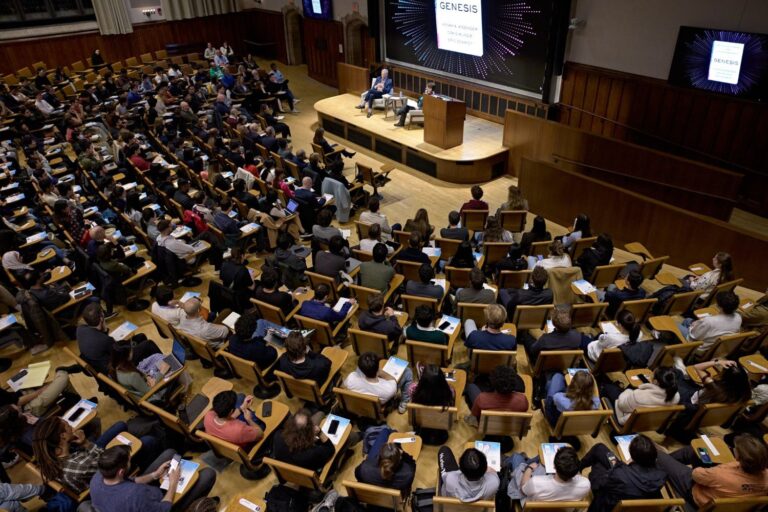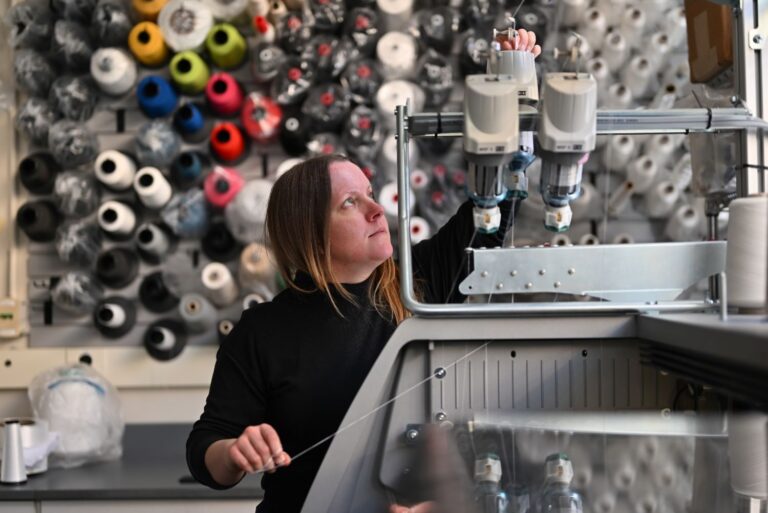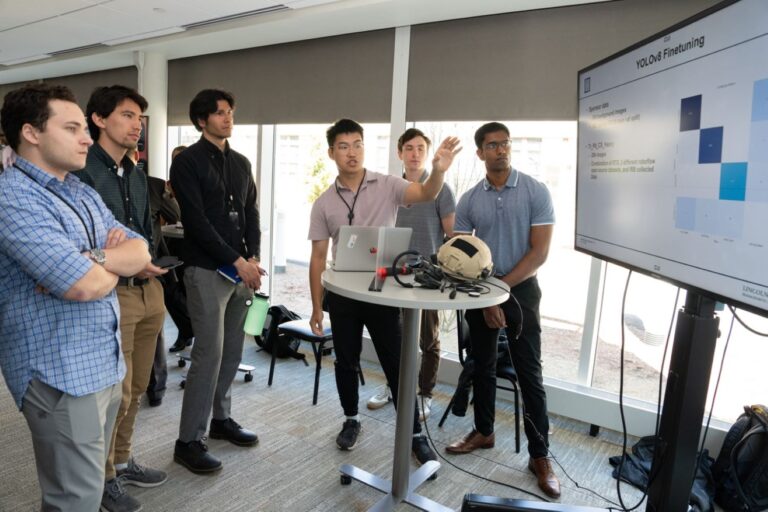EdTech’s ROI Is Attracting More Investors in This COVID-19 Crisis
It appears that the number of COVID-19 cases keeps on rising, which results in the government’s national lockdown announcement to control the spread of the virus. This led to an unprecedented disruption to the economy and directly affects all academic operations. Most schools have been shut causing an unpredictable delay in beginning the new academic session or carrying on academic tasks.
Schools are putting efforts in make the learning and academic operations less interrupted and seamless as much as possible. But these are feasible only when the technology comes to the scene. Currently, several EdTech companies have come up with different online solutions to carry out academic operations without any impediments. But before we come to that EdTech part, let us discuss some of the ways that COVID-19 will shape the education in the future.
The Hurt Could Last a Lifetime
Learning loss and school closures
To examine the learning loss difference in the U.S., McKinsey & Company, a global management firm, created the models based on academic studies of the effectiveness of remote learning compared to the traditional classroom. They also classified three kinds of students who would be vulnerable in three different epidemiological scenarios.

In fact, learning loss will much depend on access to remote learning, quality of remote instruction, home support, and degree of engagement. Based on this, McKinsey & Company divides the students into three archetypes. The first group involves students with average-quality remote learning, which means they keep on progressing at a lower space than if they had stayed at school. The second group has some students with low-quality remote learning, which makes them generally stagnate at their current grade levels. The final group includes the students dropping out of high school altogether.
Besides, there are three epidemiological scenarios mentioned by McKinsey & Company. The first scenario is called “virus contained”, which means in-class instruction resumes in fall 2020. Secondly, “virus resurgence” is when the in-school instruction does not fully resume before January 2021. And lastly, “pandemic escalation” means the virus is not under control until when the vaccines are available. In other words, the schools will continue distance learning for the entire 2020-21 school year.
In the second scenario, “virus resurgence”, it is estimated that students with average remote instruction will lose three to four months of learning. While students with low-quality remote instruction will lose seven to eleven months and if they do not receive any instructions at all, the number could go up to 12 to 14 months.
It is believed that remote learning can bring the same results to traditional learning. Yet most studies show that full-time online learning cannot deliver the academic results of in-class instruction. Additionally, in 28 states, with 48 percent of K-12 students, distance learning is not compulsory. Consequently, several students will not receive any instruction until schools reopen. Even in places where distance learning has been mandated, the great numbers of students seem to be unaccounted for. In short, online education currently is both less effective compared to the traditional schooling and reach fewer students as well.
Likely effects on low-income, black and Hispanic students
The learning loss mentioned above could most influence the low-income, black, and Hispanic students. Low-income students are the most vulnerable ones, they could not have access to high-quality remote learning or an effective learning environment like a quiet place with minimal distractions. They might also have to share the devices, the internet, and parental academic supervision is lower as well. Data from Curriculum Associates suggests that while 90 percent of high-income are regularly logging into online instruction, then only 60 percent of low-income do. The same number is seen in the group of black and Hispanic students.
As mentioned, the average loss in the second scenario, “virus resurgence”, is seven months. But to black students, the loss is 10.3 months. While the Hispanic students might face learning loss of 9.2 months, the low-income students will have to lose more than a year. Thus, it is estimated that the achievement gaps could further go up to by 15 to 20 percent.
Apart from learning loss, the high-school drop-out rates will be higher due to the COVID-19 closures. Currently, the numbers are 6.5 percent for Hispanic, 5.5 percent for black, and 3.9 percent for white students, respectively. The reasons for the higher drop-out rate are the disruption of many supports that help vulnerable kids stay in school. The supports like academic engagement and achievement, strong relationships with caring adults, and supportive home environments will likely disappear.
Also, the crisis will result in social and emotional disruption. For example, the memorable milestones like graduation ceremonies or other sports and extracurricular events will be removed since online learning cannot provide those. As a result, students’ motivation will be reduced which could hurt academic performance and general levels of engagement.
The economic impact of learning loss and dropping out
The effects of learning loss and higher dropout rates are believed to be not just temporary shocks, but they would turn into long-term harm for individuals and society.
Taking the second (virus resurgence) epidemiological scenario, that most in-class instruction will not resume until January 2021, McKinsey estimated the economic impact of learning disruption. They found that the average American K-12 students could lose $61,000 to $82,000 in lifetime earnings, which is equal to a year of full-time work. However, the numbers are even worse for black and Hispanic Americans. While the white students earn $1,348 a year less, the figure is $2,186 for black students and $1,809 for Hispanic ones.
This translates into the $110 loss in annual earnings of the entire K-12 cohort. Of that sum, $99.8 billion is the result of the loss of learning, and the rest $11.2 billion is associated with the increase in the number of high-school dropouts. Also, this loss of learning and drop-outs are not only just economic issues. Several studies show that there is a strong link between educational attainment and improved health, reduced crime, and increased political participation.
The damage is not only to individuals but also to the country as a whole. With lower levels of learning and higher numbers of dropouts, the U.S. will probably have a less skilled and productive workforce than before when the generations did not face a similar gap in learning. Moreover, if other countries could reduce the impact of lost learning and the U.S. cannot, this will hurt the country’s competitiveness. By 2040, the workforce will be filled with the current K-12 cohort. It is estimated that a GDP loss of $173 billion to $271 billion or from 0.8 to 1.3 percent.
Innovative Technology – the Future of Education

Above are some of the ways that COVID-19 will shape future education. Surely, both intuitions and students will suffer from this pandemic. However, light exists in any darkest place. In recent years, the education landscape with increased connectivity and technology that enhances the out-of-the-box thinking, innovation is showing some positive signs.
Classrooms at all levels are trying to improve and adopt smart technology, create virtual lessons, and online access for the students and parents.
A recent Gallup study illustrates that over 80% of teachers agree that there is great value in using digital learning tools in the classroom. Besides, 57% assume that personalizing instruction becomes easier and more effective since they start using digital learning tools. Additionally, almost 90% of students growing up with technology are utilizing digital tools for schooling at least a few days a week.
There is no doubt that education technology (EdTech) plays such a crucial role in this age of social distancing and learning from home. Accordingly, we can expect more opportunities along with challenges that this technology can bring to education.
The importance of technology in education
One of the biggest challenges of EdTech is that many underserved communities might not be able to get access to high-speed internet or hardware like laptops or tablets. However, several tech companies are putting efforts into getting rid of this roadblock. One impressive example that has scaled the technology to be more accessible is BYJU. According to CNBC, this company has managed to remove its remote learning application fee for students, which could help these poor children to access high-quality teaching.

In terms of virtual reality, EdTech Magazine believes that this VR is showing lots of positive affect with the students on the autism spectrum. Besides, VR creates lifelike simulations that allow students to repeat behaviors several times before applying their learning in the real world.
It can be noticed that virtual reality (VR) and augmented reality (AR) are becoming such popular learning tools for schools lately. Already, VR integration has proved to increase students’ creativity, retaining information is easier and students’ engagement in the lesson is also improved.
Many colleges are gradually adopting and applying this technology into their curriculum. For example, Sandbox ColLABorative, an arm of Southern New Hampshire University, creates the spaces for students to explore innovative ideas to shape the future of college students. Through this partnership, university students will be able to test the ideas and theories around learning languages using VR or AI. This generation born with technology will soon have the power to change secondary education.
EdTech and Its Allure to the Investors
Jeff Lieberman, a managing director at Insight Partners, assumed that with the COVID-19 jeopardizing in-school learning, EdTech software adoption is going to continue, and this is not a short-term trend. “Software will reorganize the learning way both in and out the classroom beyond the pandemic”, he added.
According to the EdSurge database, in the first half of 2020, the EdTech companies in the U.S. were able to raise more than $803 million in venture capital. Although this amount is a bit lower compared to $962 million for the first six months of 2019 (this year has been a record year for US EdTech venture capital), the 2020 amount is still consistent with first-half fundraising totals for the previous five years.
That $803 million was invested across 61 publicly disclosed deals. This number is largely in line with the number of deals over the past several years, yet according to the education investors, the number of inbound pitches to investment firms has experienced a dramatic increase.
Sarah Lee, a venture partner at Peak State Ventures, happily announced that her firm is receiving a 30% increase in the number of pitches, and most of the investing companies are from education and workforce development sectors. Shauntel Garvey, a general partner and co-founder of Reach Capital, says her colleagues also got a double volume of inbound inquiries.
At the early stages of funding, the size of the investment has not changed much compared to the previous year. But what has changed is that some companies have accelerated with their fundraising timelines according to Garvey. Some companies know to take advantage of this situation to raise more money since they saw a spike in user growth and revenue.
Maia Sharpley, a partner at Learn Capital, believes that the COVID pandemic has been a push to all the trends including digitization or skills-based training. As a result, this makes more investors interested in the market, this even attracts those who previously barely batted an eye at the education market.
What is the big deal?

Top EdTech businesses that received that biggest U.S. funding rounds include Roblox, MasterClass, and Udemy. Firstly, Roblox is an online gaming platform in which people could create, share, and sell games. The idea was able to raise $150 million in February. The company not only works in the entertainment sector but also has an education team with instructional designers aiming to teach kids how to program. Besides, more than 100 coding education camps and programs collaborate with Roblox to help build its curriculum.
Secondly, MasterClass, a recipient of a $100 million round, offers classes and courses which feature the celebrities who teach how they hone their craft. A few academic subjects are included but mostly this platform is about skills and hobbies such as basketball and cooking. Finally, Udemy, a place of more than 100,000 courses, achieved $50 million round. This online learning platform aims at adults and students and covers everything from business to technology skills and personal development.
Out of the top 10 largest publicly disclosed funding deals, only two business models are focusing on selling to K-12 schools. And the pandemic has directed them to different paths. PresenceLearning providing online teletherapy lectures to students with special needs was able to raise $27 million in May and the demand for its services still has been on a rise.
Other EdTech startups that used to focus merely on K-12 sales have currently changed to adapt. Swing Education’s normal service is to match teaches with school job openings. Yet it has to reorient itself to catch up with the trends like “learning pods”, where families organize their own informal, private educational communities.
Several K-12 districts are facing up with a shortage of budget due to decreased revenues from their local communities, which has influenced sales procurement cycles and how much they can afford for technology services. Yet not all startups face the same problem. “Those with services to bridge the communication gap and offer high-quality instructional materials will perform better”, says Sharpley.
There has been a noticeable shift in spending habits. “Willingness among American parents to pay for products has been historically lower compared to other countries,” notes Garvey. “Yet the shift to remote learning has forced them to spend more on the services whether they want to or not.”
This new habit is likely to keep on even after the pandemic. “Whatever decisions are made about returning to school, the need and demand for virtual learning solutions will not disappear since parents will perhaps maintain the role of teachers in some capacity,” says Lieberman.
Education to employment

Apart from education technology, adult-training services are also attracting investors’ attention lately. Given that the unemployment rate is rising during this recession, there is significant interest among investors in “short-term training options that could deliver numerous pathways to getting a job in certain industries beyond just tech,” shares Lee of Peak State Ventures.
Last decade, coding boot camps were such hits due to the allure of high-paying programming jobs. And currently, similar alternative educational platforms have come out for sales, healthcare, and other verticals, which has a similar demand for talent.
It might be true that employee benefits are usually discarded when company budgets are tight. In contrast, this might not be the case for training services that support the transition to a remote workforce. GO1, a library of corporate training content, was able to raise $40 million and the demand from other companies for its platform is still increasing.
In terms of the companies that sell directly to colleges and universities, they could not make it to the list of 10 biggest funding rounds of the first half of 2020, ending June 30. In this category, the one which could raise the biggest funds was Noodle Partners, which helps colleges build online programs. Its business competes directly with 2U, a service provider that has experienced a rise in its public stock value during the pandemic.

In the mid of July, two higher-ed companies which are CampusLogic and Coursera accounted for a quarter-billion in venture capital. While CampusLogic, a provider of student financial aid software to colleges, received $120 million, Coursera providing online courses to higher-ed institutions, businesses, and government agencies was able to raise $130 million.
“There is an opportunity for companies to cooperate with higher-ed institutions in order to generate the postsecondary experiences that could connect to the industry,” says Garvey. “I believe there will be more partnerships down the line.”
In the end, what will shape and drive the future education and employment is still an uncertainty. Will the schools reopen as planned or will there be a second wave that ignites a lockdown again?
But there is one thing for sure that educational institutions and businesses will continue relying on technology to enable online or blended learning and upskill the employees effectively. And it can be said that in the future, EdTech utilization will become a means not only to ensure continuity but also to enrich the learning experience for all students and employees.









